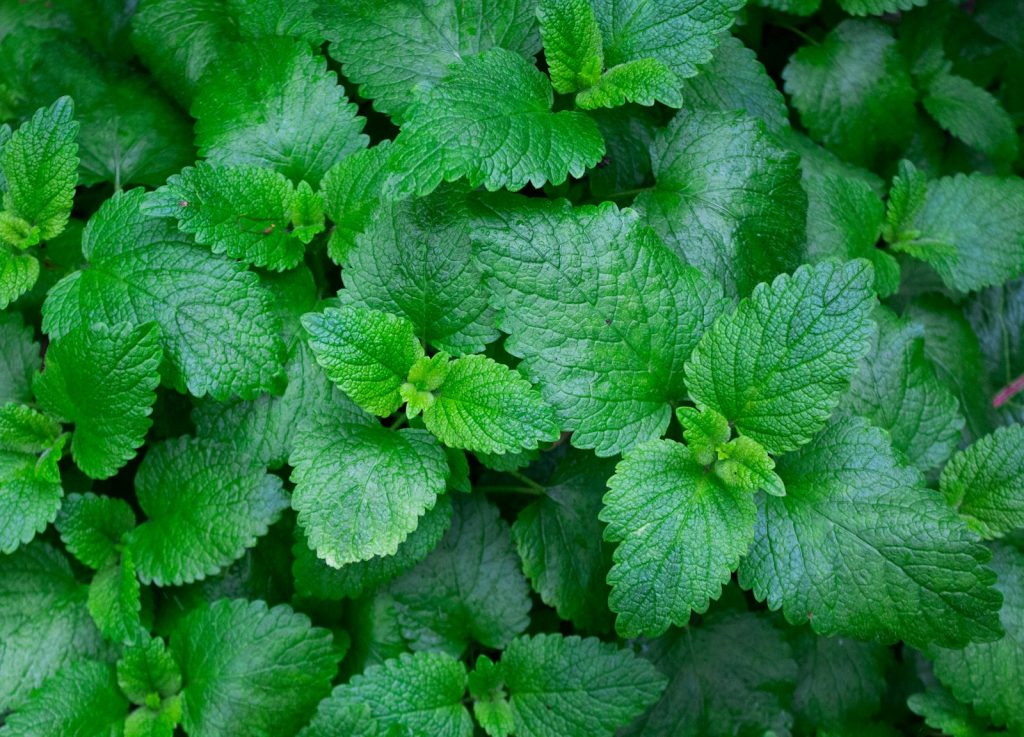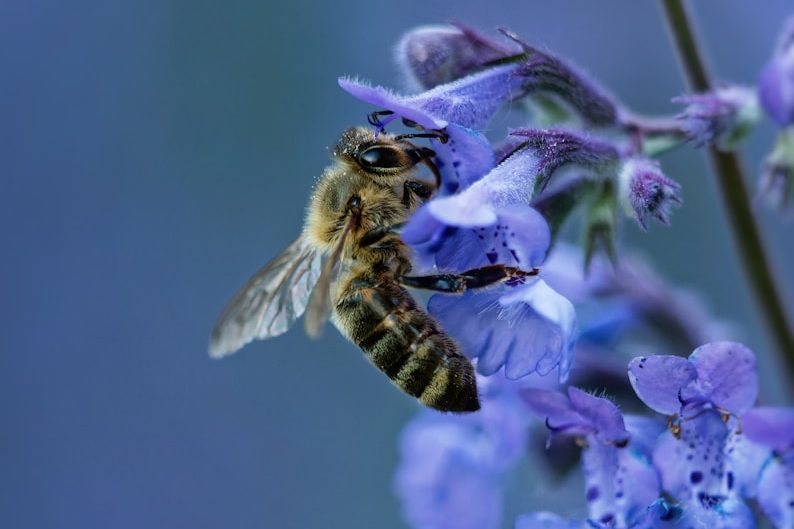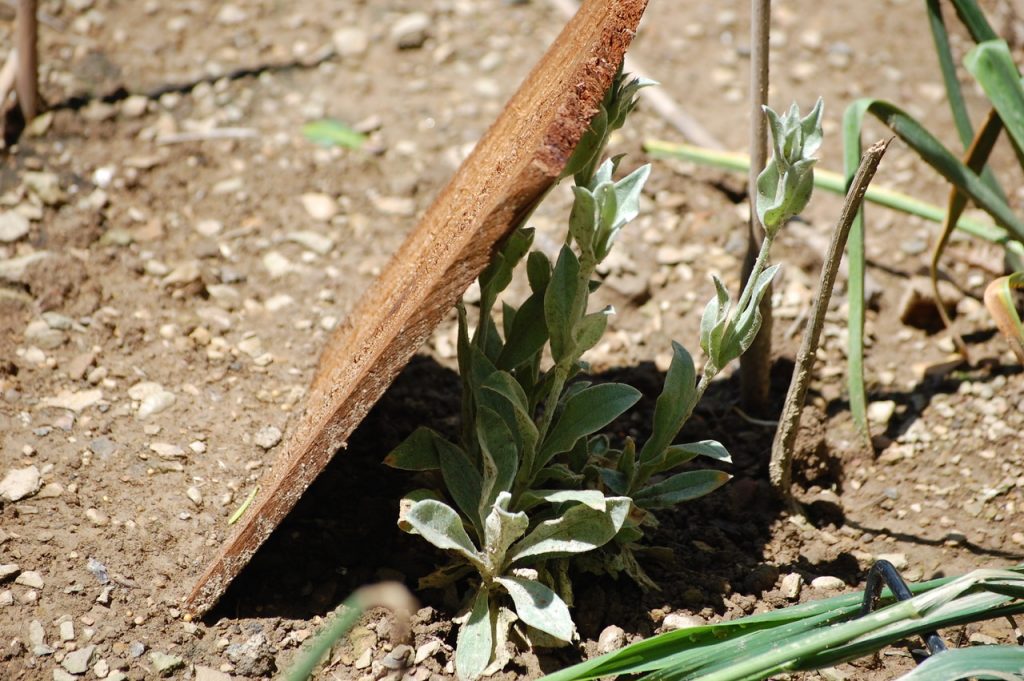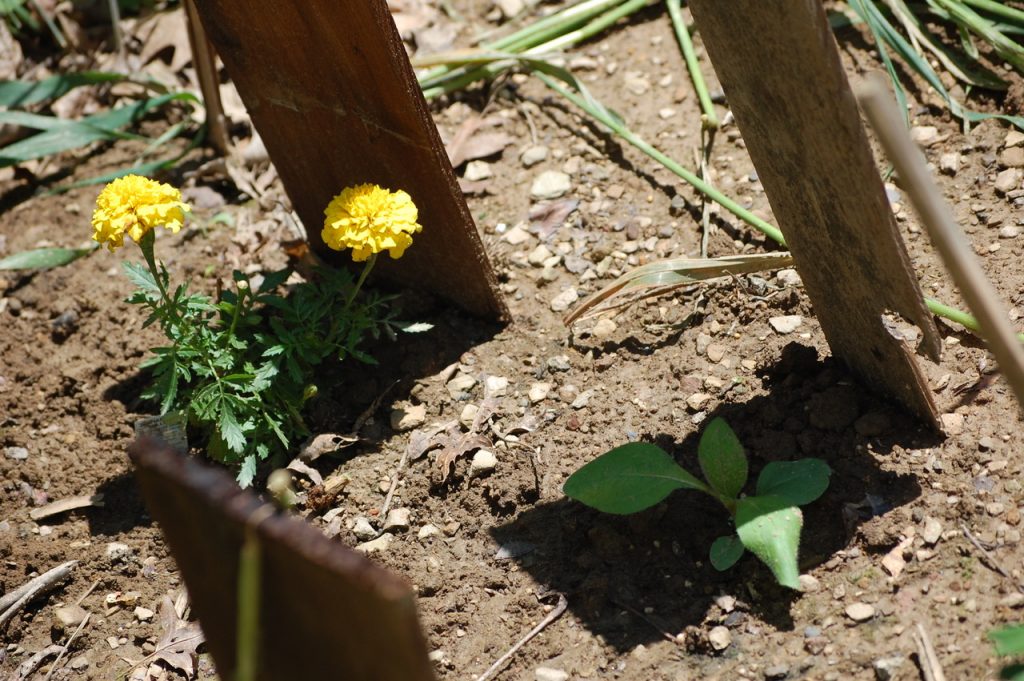Some herbs spread mostly by roots or rhizomes. Mints fall into this category. It seems when you are not looking they shoot out all over your garden. They can outcompete other plants. One way to stop this is to sink an open bottomed container like a clay drain tile into the ground and plant your mint inside this container. Another way is to choose a spot bordered with a sidewalk, wall, concrete or blacktop driveway, or other barrier. My mountain mint spreads throughout the herb bed every year competing with the monarda. This year the monarda was hard to see and needed rescuing so I pulled out much of the mountain mint. Don’t worry, there is still plenty left.
When I first encountered mountain mint I used to tell people that it was well behaved and stayed where it was planted. Well, that mountain mint was growing in clay and that did keep it under control. In the improved soil of my herb garden it seemed a different creature. Pollinators love it so I give it lots of space. They love it so much that mountain mint, during a particular observation period, had more pollinators on it than any other plant. This was determined in a Penn State Master Gardener test plot at the Penn State evaluation trials in Manheim, Pa.
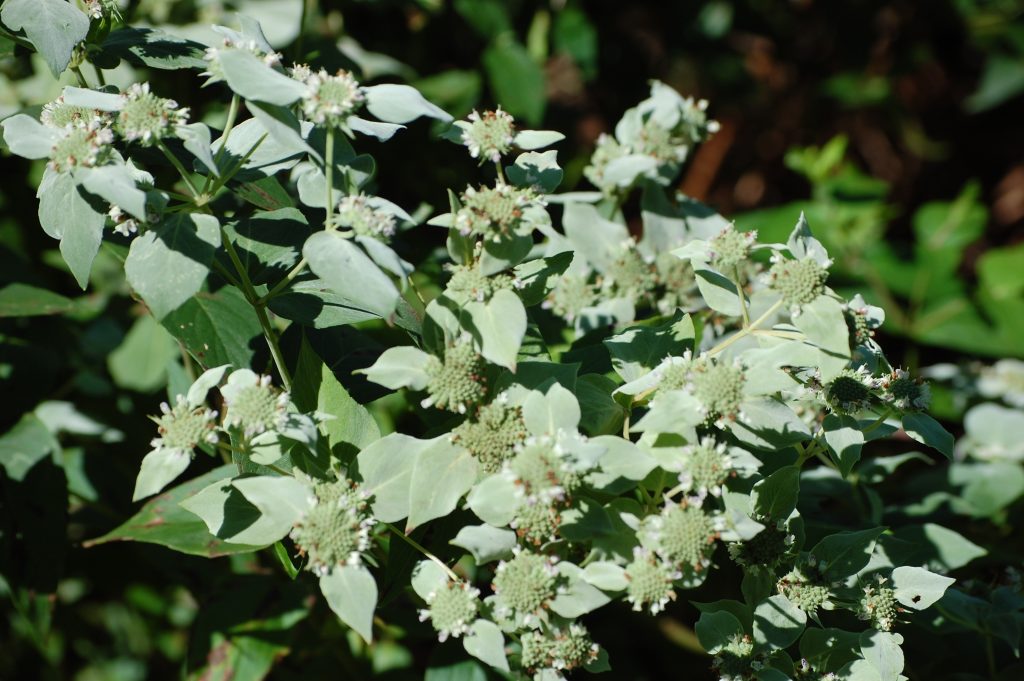
-Sandy
